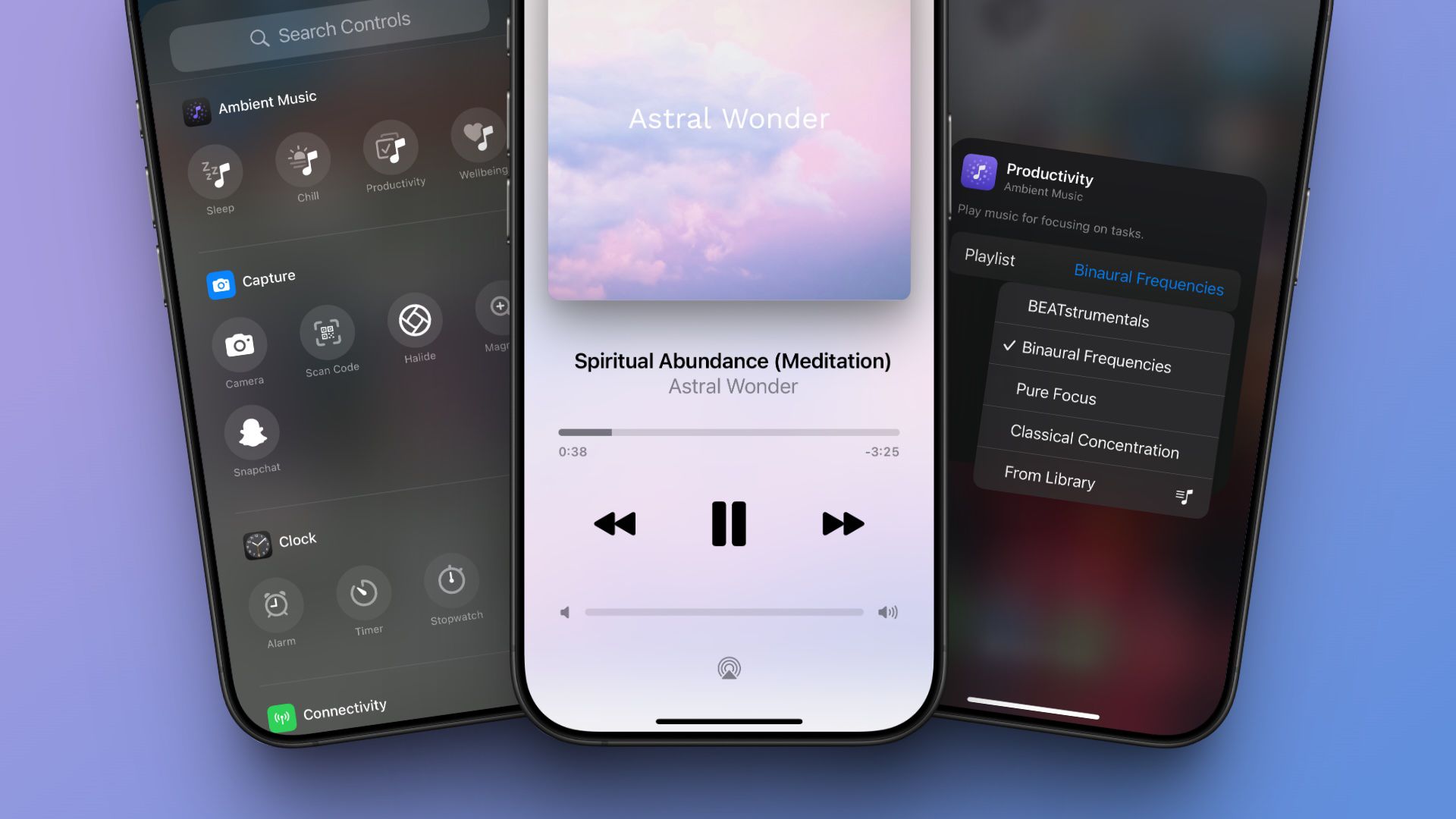Last week’s CES included the introduction of a variety of new processors for running desktops and notebooks, including new CPUs and graphics solutions. But in looking over the announcements from AMD, Intel, Nvidia, and Qualcomm, what stands out to me is just how potentially confusing 2025 could be for buyers of such systems.
It looks like we’re all going to have to make some tradeoffs between raw performance (particularly for graphics), power consumption, and AI capabilities. While just about every new system now will come with a Copilot key, not all will really be suited for running local AI features, such as those in Microsoft’s Copilot+ PC program.
It seems like we’re in a transitional phase, and I won’t be surprised if the 2026 offerings all offer at least the minimum 40 TOPS neural processing unit (NPU) that Microsoft is requiring for Copilot+ status. But for now, that’s still lacking in the most powerful chips.
As usual, every vendor shared benchmarks that showed how much faster their new entrants are compared to previous offerings and particularly competitors. And as always, I suggest taking these with a grain of salt; of course vendors show the benchmarks where they look good.
At first glance, it appears that Intel may have some advantage in single-threaded performance while AMD has some in multi-threaded performance. But again, we won’t really know until real machines get tested. And Qualcomm talks about how much better its performance is when running on battery power as opposed to being plugged in (which is how most people run performance benchmarks).
Intel Pushes Lunar Lake vPro for Commercial, Arrow Lake for Performance
No company better shows how incomplete the transition is than Intel. Its well-received Lunar Lake chips, which came to market late last year targeting premium thin and light laptops, are more power-efficient than previous generations with better graphics. Most notably, they include an NPU that can run at up to 48 trillion operations per second (TOPS), enabling what Intel has called “AI PCs,” and more importantly what Microsoft has called “Copilot+ PCs.” These have up to four performance cores and four efficient cores, and require 10 to 30 watts of power. These are now being sold as the Core Ultra 200V series.
At CES, the company unveiled the vPro versions of these chips, meaning that they have features used by large enterprises for things like management of a fleet of laptops.
Jim Johnson, SVP of Intel’s Client Computing Group (Credit: Michael J. Miller)
“A great AI PC starts with a great PC,” said Jim Johnson, SVP of Intel’s Client Computing Group, noting that this includes performance, battery life, and especially compatibility. “Everything must just run,” he added, clearly taking a swipe at Snapdragon-based PCs.
Johnson talked about how vPro’s out-of-band management can help in dealing with things like the recent CrowdStrike outage by deploying fixes before Windows boots. I was pleasantly surprised to see the company has made the first major update to vPro in many years, adding features such as support for Microsoft’s Pluton encryption and cloud-based fleet management, which looks much easier to implement than the older system that relies on on-premise servers.
All this sounds like a big win for enterprise management of laptops with AI features.
However, Intel also introduced new chips in the Arrow Lake family. These are heftier chips with the Arrow Lake H family aimed at thin and light laptops with 28 to 45 watts of power draw, with 16 CPU cores (six performance cores, eight efficiency cores, and two low-power efficiency ones) at a maximum speed of up to 5.4GHz, eight graphics cores, and an NPU that tops out at 13 TOPS, due early this quarter
The Arrow Lake HX family is for larger laptops requiring 55 watts of power or more but including up to 24 cores (eight performance cores plus 16 efficiency cores), with a top speed of up to 5.5GHz, but with only four graphics cores, reflecting that it is designed for systems with discrete graphics. This also has the 13 TOPS NPU and is due out toward the end of the quarter.
The Arrow Lake chips will be marketed as the Core Ultra 200H and 200HX families.
Intel also has the Core Ultra 200S series, which are Arrow Lake processors designed for desktops; and the Core Ultra 200U series, which is a lower-power Arrow Lake variant aimed at less expensive and less performant notebooks.
Thus the letter designation becomes more important. The H and HX systems should offer somewhat better performance and better graphics, but only the V systems have the ability to run the “Copilot+ PC” applications.

Michelle Johnston Holthaus, CEO of Intel Product and interim co-CEO (Credit: Michael J. Miller)
Looking forward, Michelle Johnston Holthaus, CEO of Intel Product and interim co-CEO of Intel, showed off the company’s forthcoming “Panther Lake” chip based on its 18A process, which the company has said will be when it catches up to rival TSMC. Holthaus said the chip is running and Intel has already provided samples to its big customers; it’s on track to launch in the second half of the year. It’s an ambitious roadmap, but I can see where all the choices could be quite confusing.
AMD Broadens Mobile Line With Gaming and Commercial Choices
In contrast, AMD—while introducing a wide variety of chips for laptop machines—seems to be largely focused on a single architecture centered around its “Zen 5” cores.
AMD’s current high-end entrant in the mobile PC market is the AMD Ryzen AI 9 300 family, known as “Strix Point,” which also came out in the second half of last year, and I’ve already tested in some machines. This has 12 cores—four of the full-performance Zen 5 cores and eight lower-power, lower-performance cores—all able to run two threads for a total of 24 threads. These have a base frequency of 2GHz with a 5.1GHz turbo, Radeon 890M graphics with 16 compute units; and the XDNA 2 NPU with 50 TOPS, made on TSMC’s 4nm process.

Rahul Tikoo, SVP and GM of AMD’s Client Business Unit (Credit: Michael J. Miller)
At this year’s show, Rahul Tikoo, SVP and GM of AMD’s Client Business Unit, announced a variety of new chips to expand the family. These include the “Krackan Point” family of Ryzen AI 7 and 5 chips, led by the AI 5 340 and 350 processors, with eight cores/16 threads or six cores/12 threads, and a 50 TOPS NPU, designed for 15-to 54-watt systems. These should be out this quarter.
Above this will be the “Strix Halo” family, now called Ryzen AI Max. This is available with up to 16 Zen 5 cores with 32 threads, up to 40 RDNA 3.5 graphics compute units, and up to 50 TOPs NPU, but with a new memory bandwidth that takes it up to 256GB/s, requiring 45 to 120 watts of power. These are designed for mobile workstations and high-end gaming laptops and looks like it will power some of the highest performing laptops in the market.
I was particularly interested in AMD doing a big push for its commercial line, with versions of the Ryzen AI 5, AI 7, and AI Max processors coming in the second quarter with Ryzen AI Pro and AI Max Pro designations. Tikoo told me AMD is putting more of a focus on this, saying its “Pro” features match vPro for security and manageability, and it too now supports Microsoft’s Pluton encryption. These should be out in the second quarter.
Perhaps most importantly, Tikoo was joined on stage by Dell’s Sam Bird, who announced that Ryzen AI Pro would now be part of Dell’s commercial offerings for the first time. (AMD and Lenovo representatives also appeared via video; the three companies—which together constitute the bulk of the enterprise PC market now all support AMD, Intel, and to a lesser extent, Qualcomm.) All this is designed to make Ryzen Pro a stronger competitor to Intel’s vPro.
On the other end of the spectrum, AMD announced its Ryzen and Ryzen Pro 200 series, with four core/eight thread, six core/12 thread, and eight core/16 thread options, designed for lower price points and requiring less power, but with only a 16 TOPS NPU (thus making it ineligible for use in Copilot+ PCs, which require 40 TOPS). These will be available in the second quarter.
For the highest-end gamers, AMD announced its “Fire Range” HX3D mobile processors, although these are only promised for later in the first half of the year. The top end here is the Ryzen 9 9955HX with 16 of the company’s “Zen 5” CPU cores, 32 threads; they can run at up to 5.4GHz max boost, with up to 144MB of cache, and uses 54 watts of TDP. Effectively, this is a mobile version of a desktop chip, again without the more powerful NPU.
For desktops, AMD introduced its top-end Ryzen 9 9950X3D chip aimed at gamers and content creators. This has 16 of the company’s “Zen 5” CPU cores, 32 threads, can run at up to 5.7 GHz, and with up to 144 MB of cache, and uses 170 watts of TDP. This looks quite powerful and will likely be paired with a discrete graphics card. This will be available in the first quarter.
Recommended by Our Editors
Speaking about discrete graphics, AMD sort of announced its forthcoming RDNA 4 architecture and upcoming new Radeon RX 9070 graphics. Some details were included in press briefings, and I saw several machines that will have this, but AMD chose not to formally announce it at its press conference, saying it didn’t have enough time to discuss the details. I expect we’ll hear more about that in the next couple of months.
Qualcomm Expands Snapdragon Line for Laptops
Qualcomm, whose chips powered the initial Copilot+ PCs, broadened its line by introducing the Snapdragon X processor, joining the initial Snapdragon X Elite and X Plus in its lineup for Windows laptops.
The X Elite has 12 of the company’s Oryon CPU cores running at 3.4 to 3.8GHz with a boost up to 4.3GHz; and the X Plus has eight or 10 cores, running at 3.2 to 3.4GHz with a boost up to 4.0GHz. In comparison, the plain X has eight cores running at 3.0GHz with no boost. It also has a less powerful Adreno GPU, but the same 45 TOPS Hexagon NPU, making it eligible for Copilot+ PC applications.
That’s important because it means this should power the least expensive Copilot+ laptops, down to about a $600 price point. And Qualcomm continues to talk about how it offers the best performance per watt, discussing how many applications run faster on its machines than on Intel-based machines when running on battery power.
My experience is that earlier Snapdragon-based Copilot+ PCs showed competitive performance with Intel and AMD machines on applications that have native ARM-architecture versions, such as the Microsoft Office suite, but there are still a number of enterprise applications and games that don’t work properly. So, it’s an option for some businesses, but not all, at least not yet.
Nvidia’s Blackwell Pushes Desktop Mobile GPU Performance
And then there was Nvidia, which riding high on its successes with AI chips in the datacenter and in discrete graphics, introduced its GeForce RTX 50 series for both desktops and notebooks, both based on the company’s “Blackwell” design. The introduction came as part of a larger keynote by CEO Jensen Huang, in which he also gave a vision for how GPU-enabled AI was transforming all sorts of industries.

Nvidia CEO Jensen Huang (Credit: Bridget Bennett/Bloomberg via Getty Images)
On the desktop side, the high end is the RTX 5090 with 21,760 CUDA cores, 32GB of GDDR7 memory and a 512-bit wide memory interface, with the board itself requiring 575 watts of power and designed for systems with a 1,000-watt power supply. Nvidia’s announcement said the board was capable of 3,352 TOPS and in his keynote, Huang said it could do up to 4,000 AI TOPs, three times that of the previous generation. These boards will have a list price of $1,999 and my guess is they will primarily be used by developers of AI applications.
More mainstream are the RTX 5080 with 10,752 cores at 2.3GHz and a 256-bit memory interface at $999, the RTX 5070Ti at $749 and RTX 5070 at $549. Huang said they’ll be as fast as the company’s previous high-end RTX 4090, which has a list price of $1,599, so delivering a lot more performance for the price than the previous generation. The first of these will be available at the end of the month, with the others slated to launch in February.
The RTX 50 series will also be available in laptops, including the top-end RTX 5070, which will be in systems starting at $1,299. Again, in the keynote, Huang said it would offer the performance of a 4090 but with half the power. Indeed, many vendors showed gaming laptops with the RTX 50 series in it, including all the high-end gaming laptops I saw announced at the show. (AMD, which historically has been a competitor for mobile discrete graphics seems to be focusing on data center and entry-to-mid-range GPUs right now.)
In the keynote, Huang talked about how agentic AI is coming to the PC and other devices and talked about making Windows a “world-class AI PC.” He also announced a variety of new AI foundation models called Nemotron.
But Huang’s biggest focus was on bringing AI to the physical world through the combination of a new “world foundation model” called Cosmos and its Omniverse software for mapping the physical world for things like digital twins. He said this would impact everything from agents and warehouse automation to self-driving cars to humanoid robotics. It was a very expansive vision, with Huang saying the “ChatGPT moment of general robotics is just around the corner.”
In the meantime, he announced a small desktop “AI supercomputer” called Digits designed to work like a cloud instance of the company’s DGX AI training systems for AI developers.
Get Our Best Stories!
This newsletter may contain advertising, deals, or affiliate links.
By clicking the button, you confirm you are 16+ and agree to our
Terms of Use and
Privacy Policy.
You may unsubscribe from the newsletters at any time.

About Michael J. Miller
Former Editor in Chief












